Indoor gardening is more than a hobby—it’s a commitment that requires an assortment of indoor plant care supplies and an understanding of their optimal use. As the National Gardening Association points out, approximately one-third of American households partake in this enriching endeavor. Therefore, the importance of properly storing and maintaining these tools and supplies cannot be emphasized enough.
Our focus is on indoor plant care tools and supplies, a broad category encompassing items like pruning shears, gloves, watering cans, and a range of plant nutrients. A study in the Journal of Environmental Horticulture highlights that effective storage directly influences the longevity and efficiency of these tools. Furthermore, it impacts the health of your indoor plants, reinforcing the criticality of maintaining an orderly and well-stocked toolshed.
It’s also imperative to consider the broader environmental implications of our storage practices. The Ellen MacArthur Foundation reports that plastic storage containers significantly contribute to global plastic waste. Therefore, the adoption of eco-friendly storage strategies is paramount to minimizing our carbon footprint.
In this article, we delve into a comprehensive guide on how to correctly store your indoor plant care tools and supplies. From organizing your supplies to ensuring their safety, maintaining their quality, and adopting environment-friendly practices, we cover all bases. The aim is to equip you with knowledge that enhances your indoor gardening practice and promotes environmental sustainability.
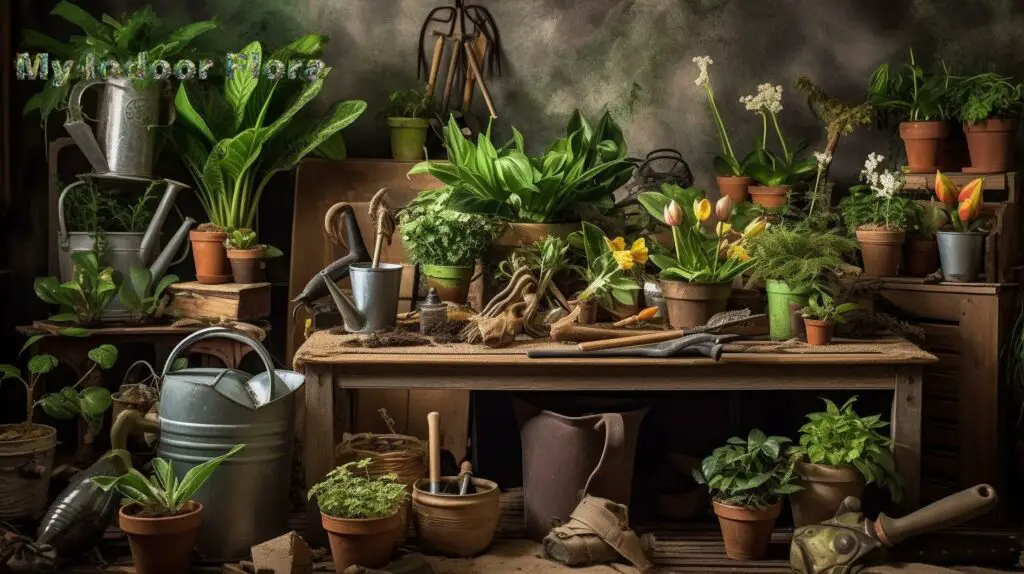
How to Prepare Your Indoor Plant Care Tools for Storage?
Preparing your tools for storage begins with a thorough cleaning. It’s crucial to remove all the soil, plant residues, and moisture that can harbor pathogens and induce rust.
Cleaning Essentials for Indoor Plant Care Tools
Cleaning essentials are quite straightforward and primarily involve warm soapy water and a stiff brush. In some cases, a more potent solution such as a 10% bleach solution may be necessary for stubborn dirt or potential disease contamination.
Always remember to rinse your tools thoroughly after cleaning to remove any soap or bleach residue that might corrode your tools over time.
Sterilization is Crucial Before Storing Your Tools
Sterilization is your second line of defense against potential plant diseases that might be lurking on your tools. A study published in the Journal of Plant Pathology highlighted that common indoor plant diseases such as powdery mildew and black spot could survive on tools, potentially infecting healthy plants.
To sterilize, you can soak your tools in a 10% bleach solution for approximately 30 minutes. Another option is to wipe the tools with alcohol wipes, especially effective for small tools like pruning shears and budding knives.
Properly Dry Your Tools to Avoid Rusting and Corrosion
Drying your tools is an often overlooked but crucial step. Any residual moisture can lead to rust, significantly reducing your tools’ lifespan. Wipe your tools dry with an old towel and leave them out to air-dry in a warm, well-ventilated area for a few hours. If you’re in a rush, a hairdryer on a cool setting works wonders too.

Ideal Storage Solutions for Indoor Plant Care Tools
Next, we navigate towards choosing the perfect storage solution for your tools, guided by three main principles – location, type of storage, and organization.
Choosing the Right Storage Location for Tools Longevity
Plants, in their diverse nature, thrive in distinct environmental conditions. Similarly, your tools, irrespective of their robustness, demand an appropriate environment for their long-term preservation. To this end, tools should ideally be stored in a dry, cool, and well-ventilated area. Direct exposure to sunlight and excessive moisture can degrade the tools’ material over time, leading to rust, tarnishing, or corrosion.
Sunlight can cause the plastic components of tools to become brittle, while moisture initiates the process of oxidation in metal parts, which, in turn, leads to rust. Therefore, ensure that your tool storage area is away from sources of moisture such as water pipes or humidifiers and is not directly exposed to sunlight.
Selecting the Proper Storage Box for Your Tools
The tool storage box, or tool chest as it’s often referred to, forms the core of your tool organization system. It serves as the primary home for your tools, safeguarding them from external elements when not in use. When selecting a storage box, opt for a sturdy structure, preferably made of plastic or metal. These materials are more resistant to pests, easy to clean, and can withstand rough handling better than their wooden counterparts.
Equally important is the box’s internal organization. It should have enough compartments or drawers to hold all your tools without overcrowding them. Each tool should have a specific place to avoid damages caused by tools clashing together. Moreover, the lid should fit snugly to keep out dust and insects, and provide additional protection against unexpected water spills or splashes.
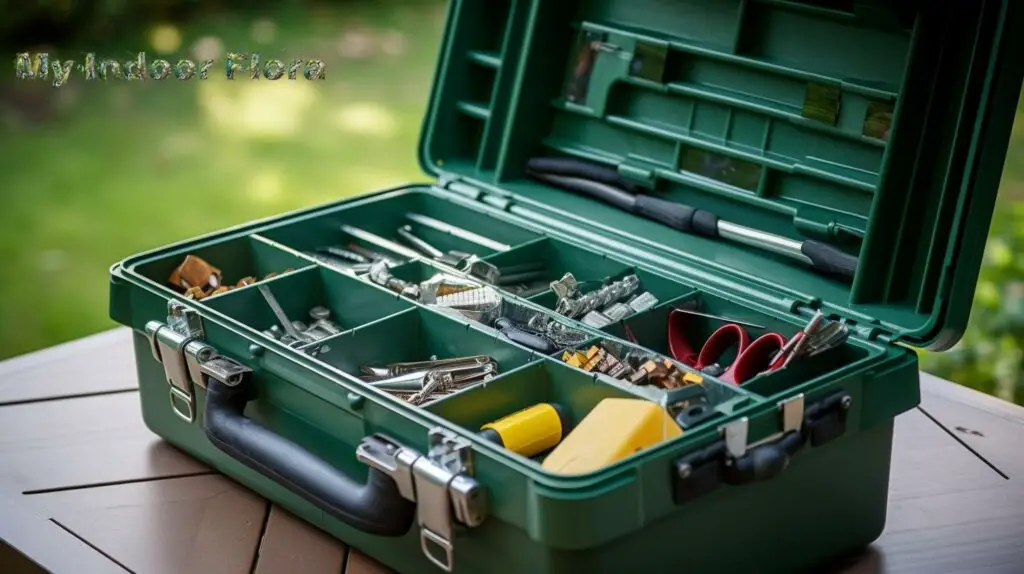
Why and How to Use Tool Racks for Effective Storage?
Tool racks offer an efficient vertical storage solution, especially for larger tools like shovels, rakes, or long-handled pruners. By hanging tools on the rack, you ensure easy visualization and access, enhancing your gardening efficiency. Additionally, keeping tools off the ground minimizes the risk of potential water damage and prevents accidents caused by tripping over them.
When installing a tool rack, ensure it’s securely anchored to a solid wall to support the weight of your tools. You can use simple S-hooks or specialized tool hangers for hanging your tools. Remember to leave enough space between each tool for easy removal and replacement.
Advantages of Using a Tool Bag
A tool bag serves as a mobile tool storage solution, complementing your primary storage system. With multiple pockets and compartments, tool bags are perfect for carrying essential tools around your indoor garden. This ensures that you have all the necessary tools at hand as you move from one plant to another.
Besides their utility during gardening sessions, tool bags also provide a handy secondary storage option. When not in use, they can be conveniently hung up, occupying minimal space.
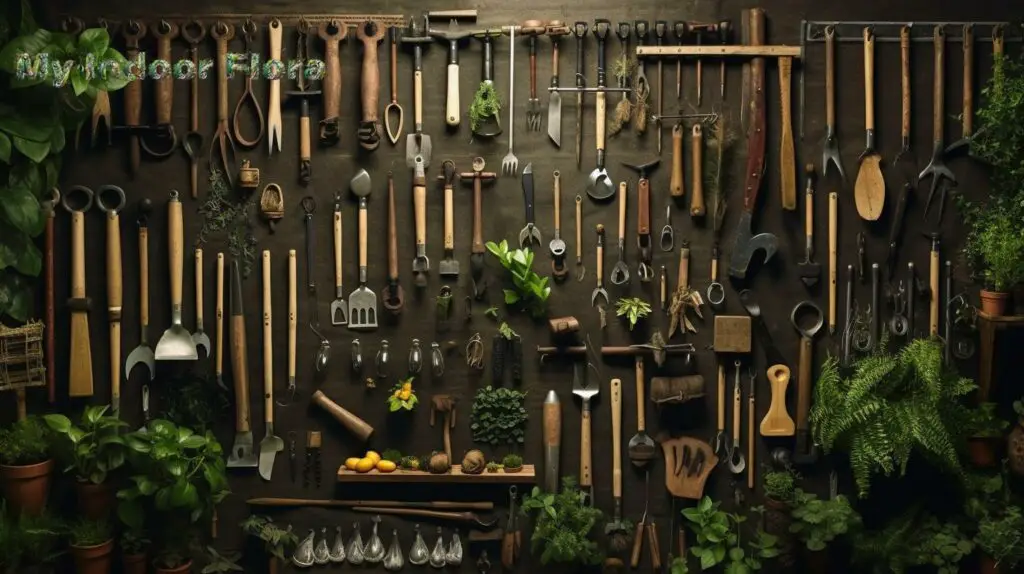
How to Organize Your Indoor Plant Care Supplies?
Organizing your indoor plant care supplies ensures that you have everything you need at your fingertips when caring for your plants. When it comes to organizing, think about what supplies you have and how often you use them. This will help you figure out the best ways to categorize and store your supplies for easy access.
1. Categorizing Your Supplies for Easy Accessibility
Categorizing your supplies can streamline your gardening routine by making it quick and easy to find what you need. Consider grouping similar items together. For example, you might have one box for soil amendments, another for pest control products, and a third for seeding supplies.
Remember to label each box clearly, perhaps even color-coding them for further ease. For instance, you could use green labels for anything to do with plant nutrition, red for pest control, and blue for seeding supplies.
In addition, try to store frequently used items in easily accessible areas. For example, if you use a certain kind of fertilizer every week, don’t tuck it away in a hard-to-reach corner.
2. Store Liquid Fertilizers and Plant Nutrients Safely
Liquid fertilizers and plant nutrients often come in heavy, bulky containers. Consider transferring these to smaller, easy-to-handle containers that have tight-fitting lids to prevent spills. Remember to label these smaller containers clearly to avoid confusion.
Store these containers in a waterproof tray or shallow bin. This way, if there is a leak, the spill will be contained and easy to clean up. As always, remember to store these products in a cool, dry location, away from direct sunlight.
3. Proper Way to Store Seeds and Bulbs
Seeds and bulbs are delicate and need to be handled with care. To store seeds, first, make sure they are fully dry. Wet seeds can mold and become non-viable. Once they’re dry, store seeds in envelopes or small jars. Label each container with the plant name and date collected.
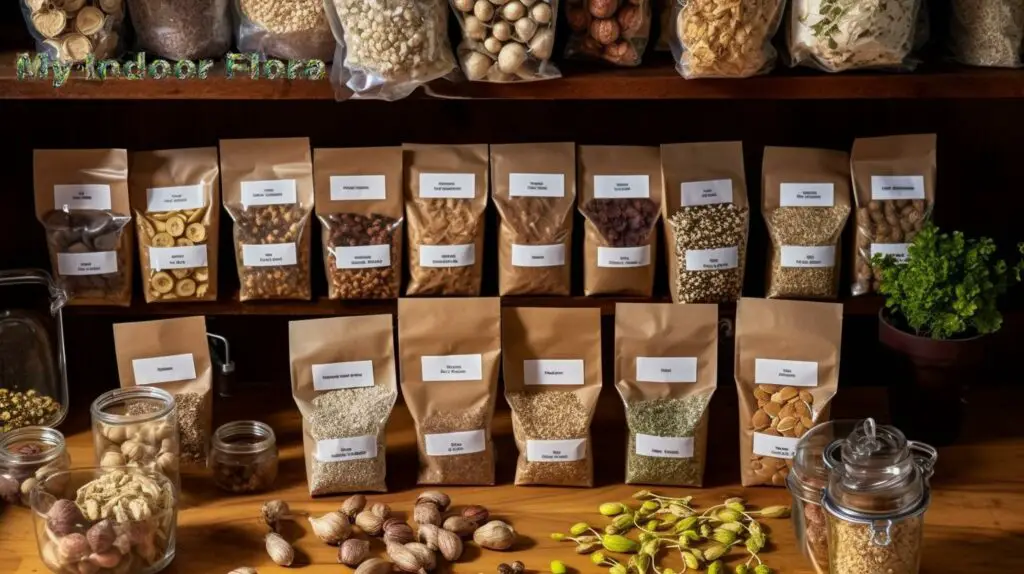
When it comes to bulbs, remove any excess soil and let them dry for a day or two. Then, place them in a paper bag, peat moss, or sawdust to protect them from moisture. Again, remember to label the bag with the bulb type and date.
4. How to Safely Store Pesticides and Herbicides?
Pesticides and herbicides should always be stored with safety in mind. Firstly, ensure that these products are stored in a locked cabinet or box, out of reach of children and pets.
In addition, make sure the area has good ventilation. Some of these products can produce fumes that could be hazardous in a closed-off space.
Never transfer these products into unmarked containers or containers that were used for food or drink. If you need to divide the product into a smaller container, label it clearly with the product name, the date, and safety precautions.
Remember, organization is not a one-time task. Regularly go through your supplies, check for expired or damaged items, and update your system as needed. Your future self will thank you for your efforts when your gardening tasks go smoothly and efficiently.
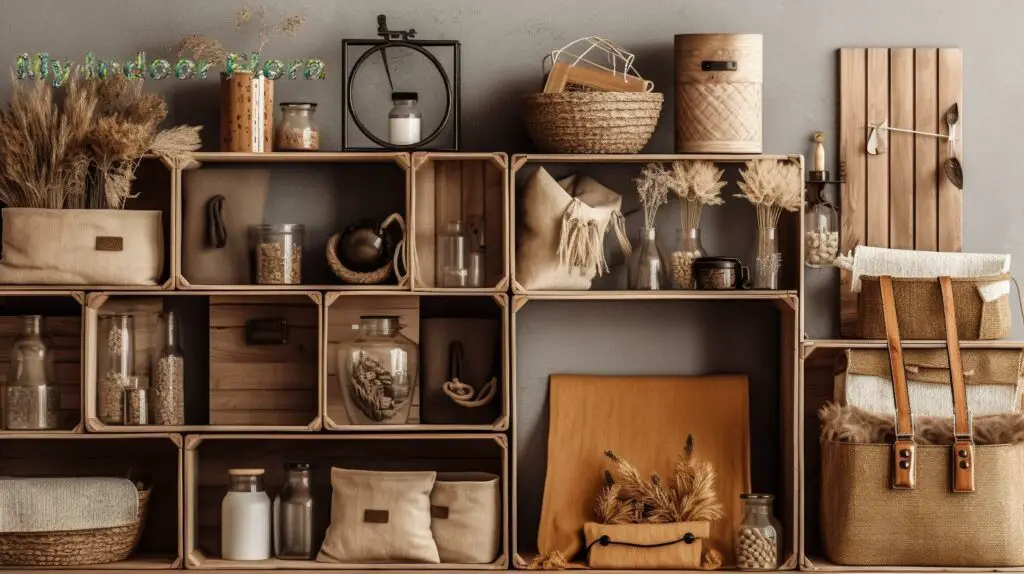
How to Maintain the Quality of Your Stored Tools and Supplies?
Maintenance plays a significant role in extending the lifespan of your gardening tools and supplies. Ensuring their quality requires routine check-ups, cleaning, and timely replacements of expired supplies.
Regularly Checking Your Tools and Supplies
Regular checks enable you to spot any early signs of wear and tear or damage. They also allow you to stay updated with the status of your supplies – know what’s running out, what needs replacement, and what’s still in good condition.
For instance, inspect your tools for rust or dullness. A dull blade on a pruning shear may harm plants by crushing stems instead of making a clean cut, affecting the plant’s health.
Also, periodically check the labels on your plant care supplies to verify their expiry dates. Using expired supplies, like old seeds or out-of-date fertilizers, may not yield the desired results and can even harm your plants.
How to Prevent Rust and Decay of Tools?
Preventing rust and decay of tools is an essential aspect of tool maintenance. One simple yet effective tip is to store your tools off the ground. This keeps them dry and minimizes their contact with damp surfaces where rust is likely to form.
A DIY rust prevention trick involves filling a bucket with sand and a quart of motor oil. Plunging your metal tools into this mix cleans them and creates a protective barrier against rust. Make sure to give your tools a quick wipe down after using this method before you store them away.
Furthermore, sharpen your tools regularly. Sharp tools not only make your work easier but also prevent the tools from breaking under strain. You can use a file or a sharpening stone for this purpose. Remember to wear safety gloves while sharpening tools.
What are the Signs of Degradation in Stored Plant Care Supplies?
Degradation in your plant care supplies can come in various forms and is important to detect early.
Seeds may show signs of mold growth, discoloration, or may even be infested by insects if not stored properly.
Liquid supplies such as fertilizers or pesticides may separate, change color, or develop a strong off-smell. Always give these a visual check and a quick sniff test before use.
In the case of potting soil or other similar supplies, the presence of insects or a sour or moldy smell is an indication of degradation.
Whenever you notice these signs of spoilage, it’s best to discard the product. Using degraded plant care supplies can damage your plants and even introduce diseases to your indoor garden.
Overall, maintaining the quality of your stored tools and supplies ensures that your plants receive the best care possible. Regular checks and preventive measures not only help extend the life of your tools and supplies but also contribute to the health and growth of your indoor plants.
How to Make Your Storage Environment-Friendly?
In our endeavors to create beautiful indoor gardens, it’s essential to remember our larger responsibility to the environment. Making our storage practices eco-friendly is a significant step in this direction.
Sustainable Storage is Essential
Sustainable storage practices not only reduce our carbon footprint but also improve the overall health of our indoor garden. By using non-toxic materials, we reduce the chances of harmful substances leaching into our plants and soil. Sustainable practices also promote a culture of recycling and minimal waste, which can have far-reaching benefits for our environment.
Moreover, sustainability doesn’t stop at our choice of materials; it also extends to how we use and dispose of our plant care supplies. Using organic fertilizers and pest control methods reduces the pollution load on the environment.
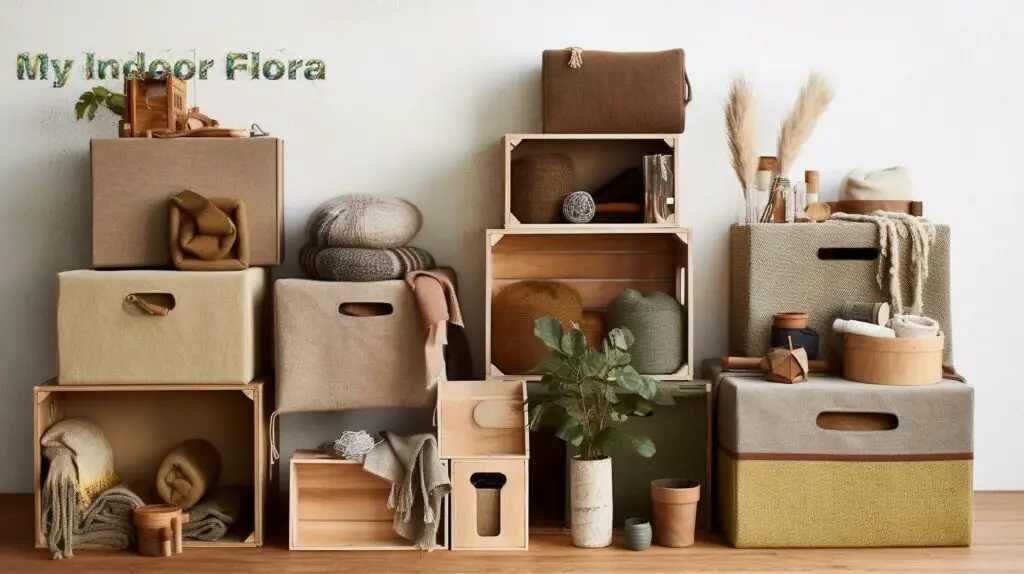
What are the Eco-friendly Materials to Use for Tool Storage?
When it comes to eco-friendly materials for tool storage, natural materials such as wood and metal are excellent choices. For instance, wooden boxes or chests are sturdy, long-lasting, and can be recycled at the end of their life.
A creative idea would be to repurpose old furniture for tool storage. An old chest of drawers or a bookshelf could make a unique and charming storage unit for your gardening tools.
Fabric tool bags made from organic or recycled materials are also an environmentally friendly option. They are lighter and easier to move around than wooden or metal boxes.
How to Minimize Plastic Usage in Your Storage Methods?
Minimizing plastic usage in your storage methods can be achieved in numerous ways. For storing small items like seeds or bulbs, consider using glass jars or metal tins instead of plastic bags. These containers can be reused indefinitely and won’t leach harmful chemicals.
In the case of larger items, consider using boxes or baskets made from natural fibers like jute or bamboo. Not only are these materials sustainable, but they also add a rustic charm to your indoor garden.
Moreover, instead of buying new containers, look around your house for items you can repurpose. Old glass jars, tin cans, wooden crates, or even ceramic pots can make excellent storage containers.
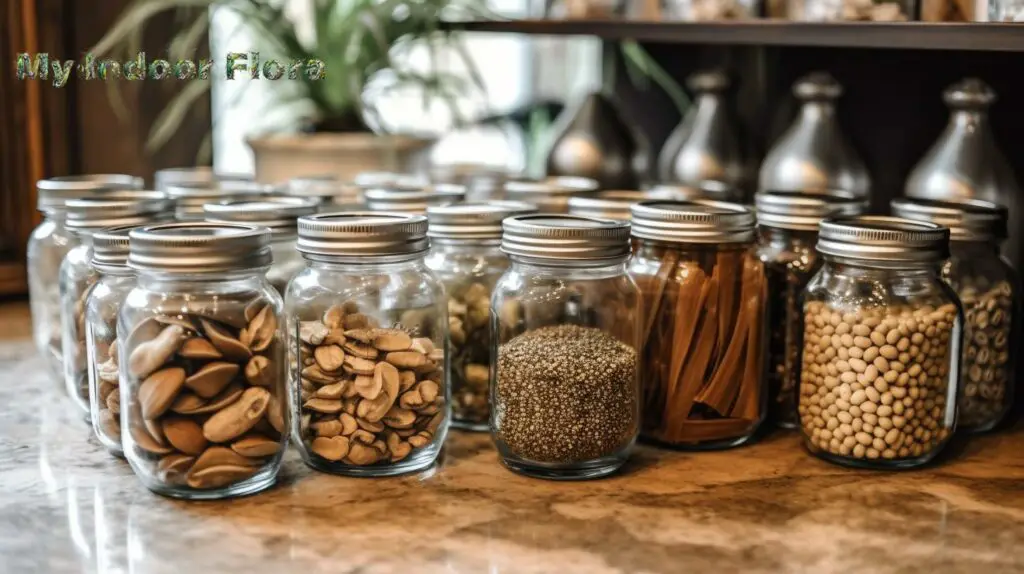
When it comes to waste, try to recycle as much as possible. For instance, empty fertilizer or pesticide bottles can be thoroughly cleaned and used to store homemade plant care products.
In short, making your storage environment-friendly is a journey that extends beyond just the choice of storage materials. It involves a holistic approach that encompasses how you use, recycle, and dispose of your plant care tools and supplies.
Conclusion
Understanding how to properly store your indoor plant care tools and supplies is indeed a vital cog in the wheel of successful indoor gardening. Imbibe these practices into your gardening routine, and watch your indoor garden bloom into its full potential. Remember, every small effort counts in this journey towards creating a healthier environment for your indoor plants, and ultimately, for yourself. Enjoy the process, for it’s not just the plants that grow, but the gardener too.
